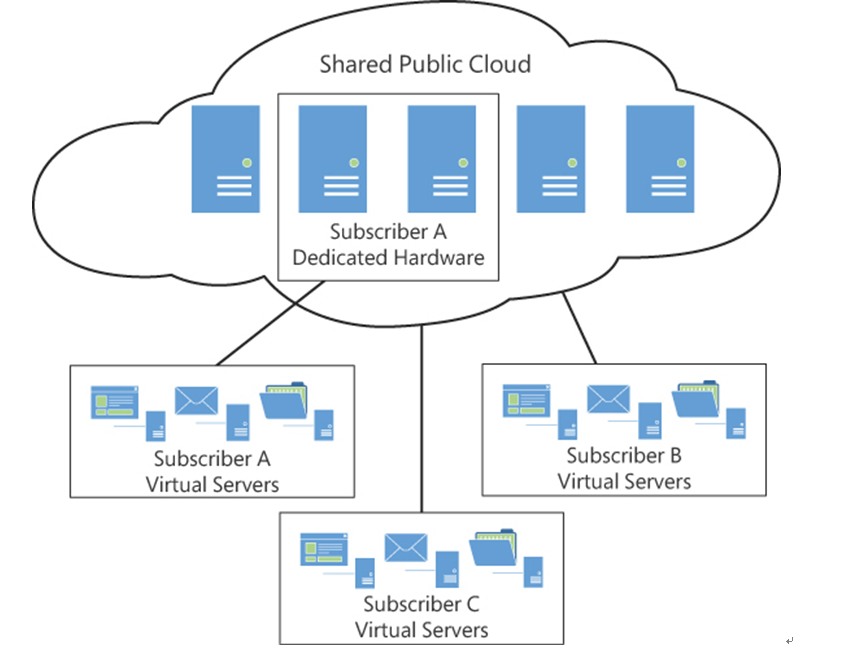Organizations today use cloud resources in different ways and for various reasons. A new business or division might build an entirely new IT infrastructure using only cloud-based resources. Meanwhile, a business already invested in a traditional on-premises IT infrastructure might use the cloud to expand or add selected services. Organizations planning their infrastructures can use any of the three cloud architecture permutations described in the following sections: public, private, and hybrid.
Public cloud
A public cloud is a network of servers owned by a third-party service provider at a remote location, which provides subscribers with access to virtual machines or services through the Internet, often for a fee. Prices are based on the resources or services you use. Microsoft Azure, Amazon Web Services, and Google Cloud are all examples of public cloud service providers organizations use to host their virtual machines and access other services.
Note Public does not mean unprotected
The term public cloud is something of a misnomer; it does not mean that the virtual machines an organization creates in a provider’s cloud are public—that is, open to access by anyone. It means only that the provider furnishes services to the public by subscription, accessible from any location at any time via the Internet.
These major players in the public cloud industry maintain thousands of servers in datacenters located around the world. They can accommodate large enterprise clients by providing services on a global scale. There are other, smaller cloud providers offering the same services, which might not be able to function on such a massive scale, but these can also have their advantages. Because the cloud service providers are responsible for managing and maintaining the physical servers, the subscribers save a great deal of time, expense, and human resources.
There are two basic types of public cloud deployment that organizations can use, as follows:
- Shared public cloud Subscribers access services that a third-party provider implements on hardware that other subscribers might use simultaneously. For example, a physical host server at a provider site can run virtual machines belonging to different subscribers simultaneously, as shown in Figure 1-7. The VMs are secured individually and functionally isolated from each other. This is what is typically meant by a public cloud.
- Dedicated public cloud Subscribers contract with a third-party provider for a hardware infrastructure dedicated to their exclusive use. (See Figure 1-8.) The services provided are the same as those in a shared public cloud; the only difference is the hardware the provider uses to furnish the services. Obviously, this arrangement is more expensive than a shared public cloud, but some organizations need the additional security and fault tolerance provided by having hardware dedicated to their own use.

FIGURE 1-7 Virtual servers running in a shared public cloud

FIGURE 1-8 Virtual servers running in a dedicated public cloud
Therefore, the term public cloud can refer to a provider that enables businesses to build their IT networks virtually instead of physically. Microsoft 365 subscribers can use these services to implement all or part of their productivity infrastructure. However, this is not the only function of the public cloud. When people stream movies to their televisions, use web-based banking services, or access their email online, they use public cloud providers. The difference in these cases is that the provider furnishes specific services instead of an IT infrastructure.
